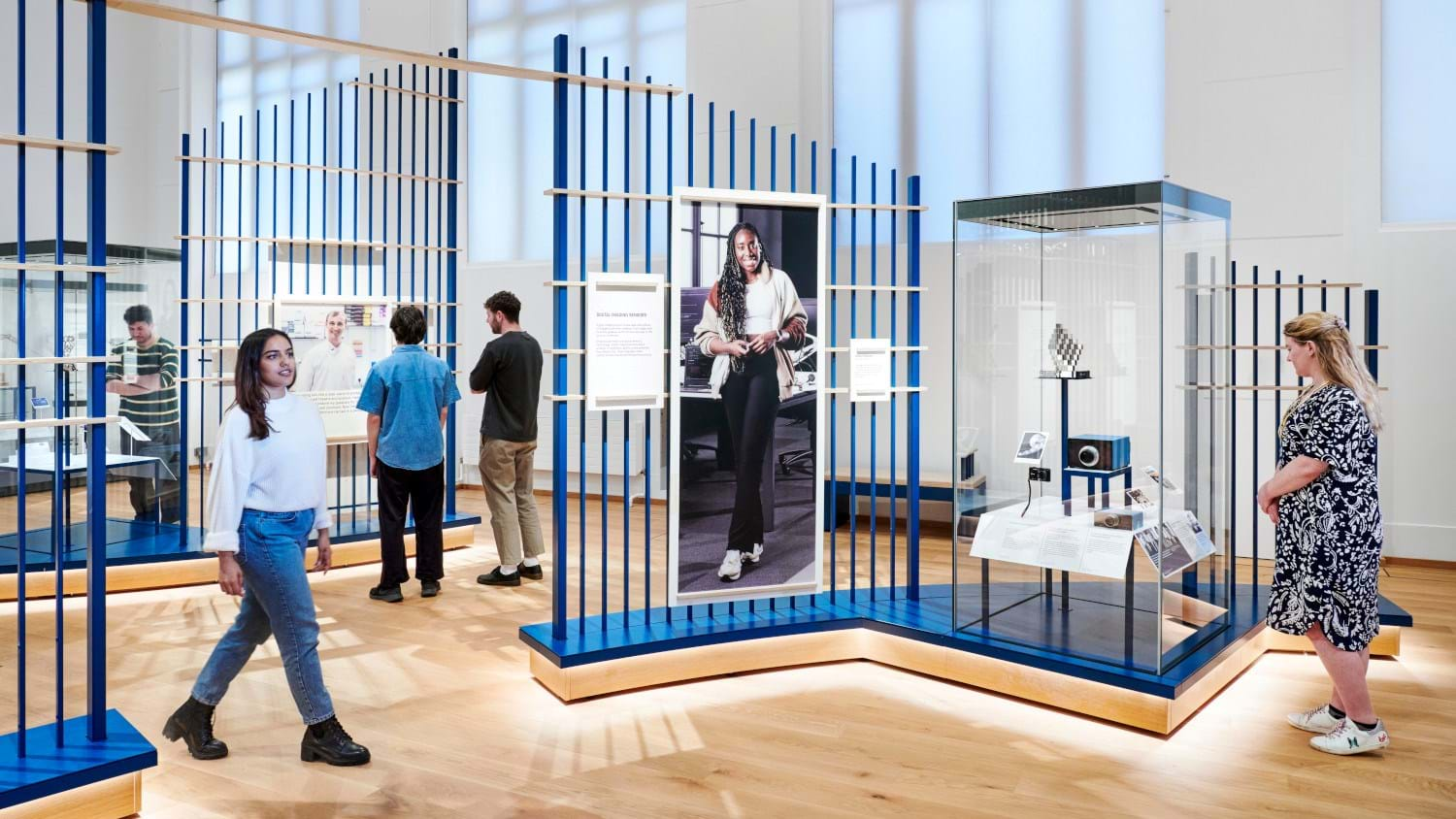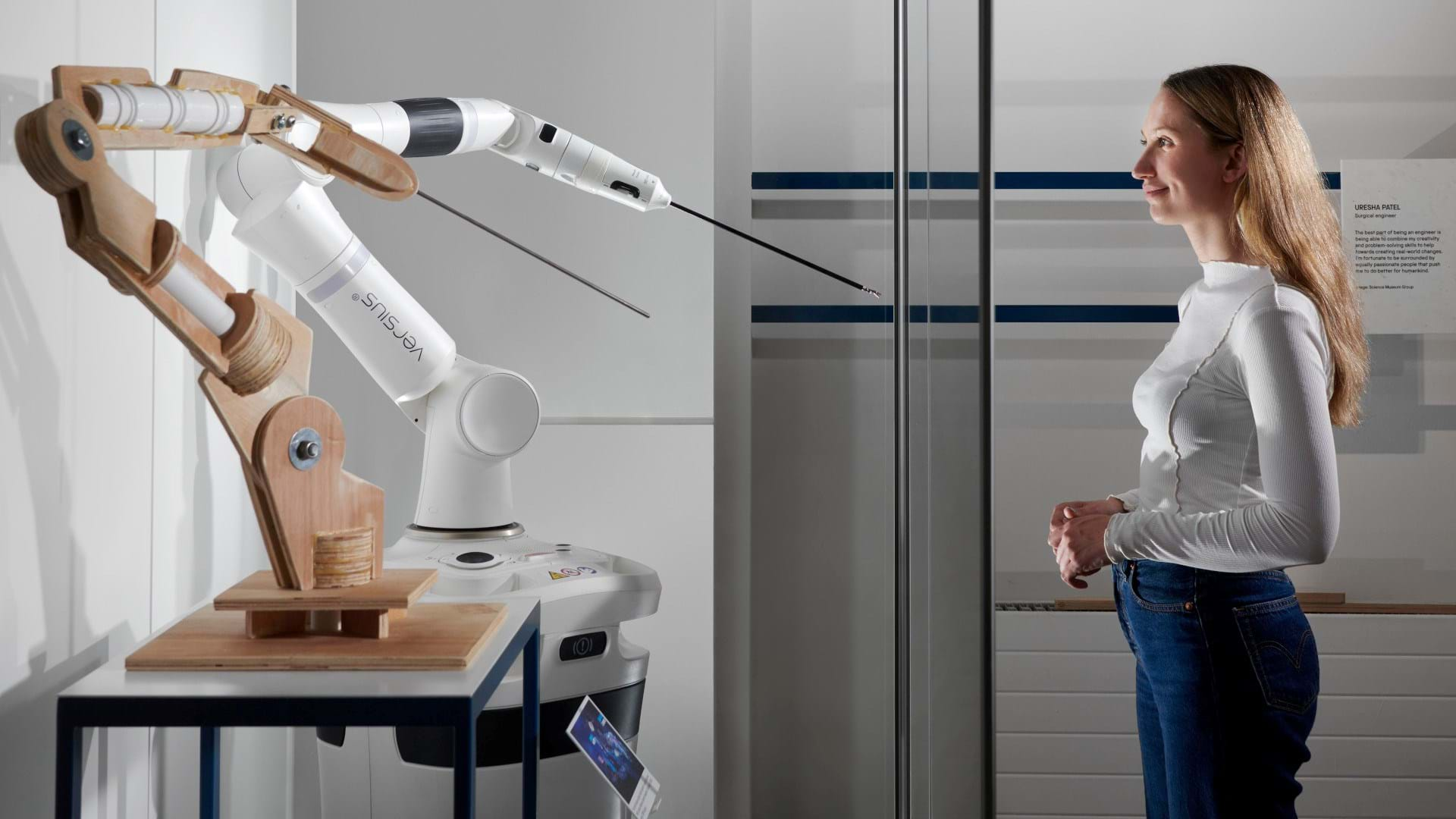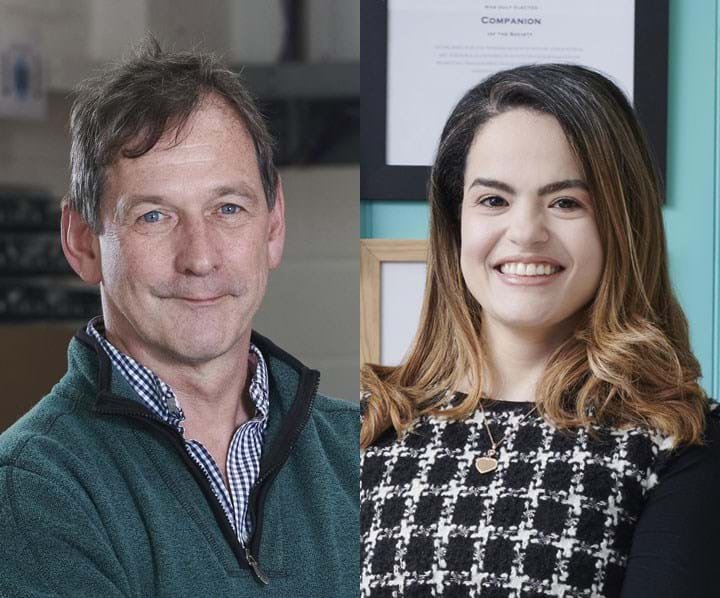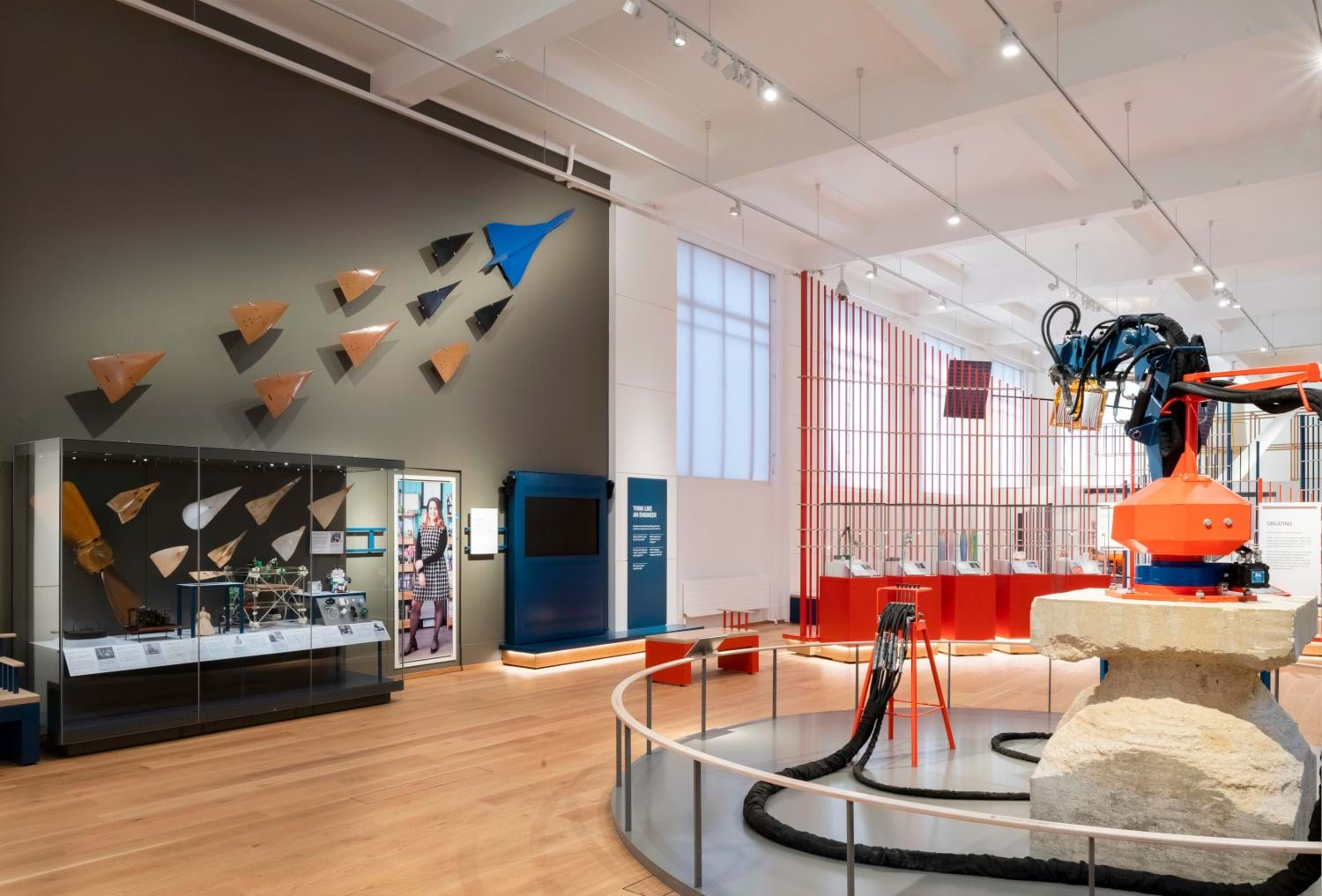A new gallery celebrating engineers opens at the Science Museum

AN exhibition called Engineers opened today at the Science Museum in London dedicated to world-changing engineering innovations and the diverse and fascinating people behind them. I caught up with the engineers featured in the gallery and those who created it to ask what they hope it will achieve.
In short, the ambition of the gallery, which includes more than 70 exhibits ranging from James Watt’s kettle to a surgical robot arm, seeks to help overcome common misconceptions about what engineers do, and to inspire young visitors to become the engineers of our future.

Speaking at the opening ceremony, Hayaatun Sillem, CEO of the Royal Academy of Engineering, said: “It's not a coincidence that we're opening the gallery on International Women in Engineering Day. It's absolutely vital that we have an engineering profession that reflects the society that it serves and at the moment we still have a long way to go. In the UK in particular, we suffer from very outdated stereotypes and caricatures of who engineers are and what they do. This gallery provides a fantastic opportunity for young people, and those that influence their career decisions, to challenge those outdated stereotypes and see for themselves who are the engineers that impact our lives; what does it feel like to be an engineer; what's the motivation behind being an engineer; and what's the process behind being an engineer. I think that's a really, really important milestone.”
Engineers who expect to turn up and visit their own discipline’s patch – chemicals, civils, mechanicals etc – will instead discover that the exhibition is divided into four cross-cutting themes that illustrate the collaborative nature of engineering. These are: bodies, lives, connections and creating.
Wander around the other galleries at the Science Museum – including Information Age and Mathematics – and you’ll notice that Engineers has a keener focus on the people doing the engineering, rather than the objects that have been engineered.
“It's interesting that we called the gallery Engineers rather than Engineering because like most people, our visitors are fascinated by people like themselves,” said Ben Russell, lead curator of the Engineers gallery.
Inspiring engineers

Ahead of the gallery opening, I caught up with two of the engineers who feature in the exhibition: Larissa Suzuki and Andy Hall.
Suzuki is a technical director at Google and a visiting researcher with NASA who is working to build an interplanetary internet. I asked her what she hopes the new exhibition will achieve.
“For children, it’s going to be very good for them to go and see engineering as it is. For adults it’s going to break a lot of stereotypical preconceptions which a lot of people have that engineering is something that women are not involved in, that it is purely machinery-oriented, and not human-oriented. So, I'm hoping this is going to change the perception of adults and help children to start seeing themselves in the engineering field.”
Andy Hall is featured for his work developing small farming robots that scan all the plants in a field and provide a farmer with data on where to selectively add pest controls and nutrients to help improve the sustainability of food production.
“I hope it will inspire lots of people to understand engineering is creative,” Hall said. “You do physics at A-level, and maths, which people never think is creative, but it's tremendously creative and you get a chance to turn ideas into something that will make a difference to people. If this helps people understand that engineering is a massively creative subject that can make a big difference to people that will be really great.”
Suzuki said: “I like creating things. That is one of the things that engineers like a lot. There's a Lego robot in the gallery that I built. It plays the drums. It’s one of the things that I enjoy doing. I really like electronics and I very much like to bring life to structures. I found it very nice to go to the Science Museum and see a robot there that I’ve built.”
Asked about her hopes for her work with NASA and the Jet Propulsion Laboratory, Suzuki said: “My work with NASA on interplanetary internet is to mainly enable us to perform deeper research in space…I think it will help us to have a much better understanding of the universe, how life is formed, and how we can improve ours.”
I mention to Hall that the exhibition has avoided focusing on engineers through a disciplinary lens and instead looks more at the collaborative nature of being an engineer. He explains how his work developing a farming robot offers a good snapshot of how engineers have to expand their horizons and work with other experts to help solve important social challenges.
“Agrobotics is fascinating. You need mechanical engineering because [the robot is] made of stuff. You need software because nothing works without software. You need AI. Then you need cameras and vision. Then you need Wi-Fi and communication in networking. Then you need GPS satellites. Then you need to know what the life cycle of wheat is and how it grows. And then you need to know soil. Then you need to know slugs,” he said with a wry smile.
“I ended up learning a lot about slugs that I never really wanted or expected to know. But somebody said we've got a grant to do a project on detecting slugs. A year later we built a thing which could detect and treat slugs.”
Diversity and opportunity
The gallery opens to the public today and has been timed to coincide with International Women in Engineering Day. Suzuki is a keen advocate of increasing diversity in STEM. She explains that she is neurodiverse – she has autism and ADHD – and wants to help wider society understand that the field of engineering is open to everybody.
“I think it comes down to us to demystify the profession. For women and neurodiverse people who are interested in [engineering] I think it is going to be the best thing they choose to do. I've been interested in everything my entire life and in engineering you're not restricted to any field of science. You can do everything and no one will think you're crazy if you work in agriculture, then you work in medicine, then you work in government, then you work in robotics. That is fine because it transfers skills from every single field to another.”
Suzuki wants employers to be open-minded about disability and take the time to listen to people and consider their needs.
“There's not a single kind of mind. When we design well for people with disabilities, we design well for everybody else.
“I believe in the social model of disability. It is not the person that is disabling, it is the environment that is disabling. When you fix the environment, no one has a disabling issue anymore. I think that is what we should all be doing: make sure every single person will have the same and equal access to everything.
“I've always been fascinated about how we make technology work for us. To make us happier and healthier. But sometimes people forget about the accessibility element – how to make computing work for everybody, and to allow everybody to enjoy playing games and interacting with websites, and interacting with pieces of hardware in the same way as everybody else. So I think accessibility is one thing that is fundamental in engineering. I think it's also one of the things that we can show how technology and engineering can augment and work for the best of mankind.”
Engineering an exhibition
“Part of the fun – of the challenge – of being a curator is working out exactly what fits into the gallery,” Russell said.
“When you build a gallery like this, it's basically an engineering process. You have to establish what the parameters are. You have a finite amount of space, a finite amount of time, and a lot of it's about consultation and connectedness. We emphasise that in the gallery. The interconnectedness of engineers, how they work in teams and disciplines to come together. But that's what we have to do as well.”
To select the focus and secure the exhibits, Russell and his team worked with engineers, including a content advisory panel that included Nilay Shah, professor of process systems engineering at Imperial College London. Russell is an economic historian by background and has spent more than 20 years studying the history of engineering and engineers. He playfully noted his own bias but said the museum has the best engineering collections in the world.
“I know we’re called the Science Museum but mainly it’s full of engineering if we're honest with ourselves.
“I said to my colleagues, we could have had a gallery three or four times bigger and it still wouldn't be big enough so we have to focus. And so we used the previous winners of the QE Prize as a sort of lens.”

From Russell’s enthusiasm it’s clear how passionate he is about finding exhibits that will excite and engage visitors: from the prototype surgical robot arm hastily built from plywood over a weekend during a pique of engineering inspiration, to the world's first and second digital colour cameras.
“I was on a Teams call with [QE Prize winner Michael Tompsett] and he had them on a shelf over his desk. They are quite amazing objects. Think about how many tens of billions of digital cameras have since been created. To have number one in the exhibit, you think ‘Wow’!”
The gallery is open until at least 2028 and Russell said the content will evolve as new QE Prize winners are announced, and their stories are added to help reshape the focus of the exhibition.
I close by asking Russell what most surprised or inspired him as he and his team curated the gallery.
“Engineers are amazing. I wish I was one actually. My dad was. The thing that impressed me and which I hadn't quite realised was just how much engineering tends to run in families.”
He said from working with engineers throughout the curation process he has seen how having an inspirational engineer in the family seems to be a key factor in others choosing to become engineers.
Hopefully the gallery will help breakthrough that bottleneck and the engineers on show can help inspire those who – until they visit – haven’t had an engineer in their lives.
Engineers opens today at the Science Museum in London and is free to attend.
Recent Editions
Catch up on the latest news, views and jobs from The Chemical Engineer. Below are the four latest issues. View a wider selection of the archive from within the Magazine section of this site.




